|
Books Should Be Free Loyal Books Free Public Domain Audiobooks & eBook Downloads |
|
|
Books Should Be Free Loyal Books Free Public Domain Audiobooks & eBook Downloads |
|
Science |
|---|
|
Book type:
Sort by:
View by:
|
By: Oliver Lodge (1851-1940) | |
|---|---|
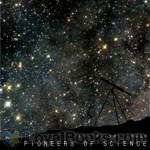 Pioneers of Science
Pioneers of Science
This book takes its origin in a course of lectures on the history and progress of Astronomy arranged for Sir Oliver Lodge in the year 1887. The first part of this book is devoted to the biographies and discoveries of well known astronomers like Copernicus, Brahe, Kepler, Galileo and Newton. In the second part, the biographies take a back seat, while scientific discoveries are discussed more extensively, like the discovery of Asteroids and Neptune, a treatise on the tides and others. | |
By: Oscar D. Skelton (1878-1941) | |
|---|---|
 Chronicles of Canada Volume 32 - The Railway Builders: A Chronicle of Overland Highways
Chronicles of Canada Volume 32 - The Railway Builders: A Chronicle of Overland Highways
When the pace of railroad construction slackened in 1914, Canada had achieved a remarkable position in the railway world. Only five other countries—the United States, Russia, Germany, India, and, by a small margin, France—possessed a greater mileage; and, relatively to population, none came anywhere near her. This is the story of how Canada became a country stitched together by rail. | |
By: P. T. Barnum (1810-1891) | |
|---|---|
 Struggles and Triumphs, or Forty Years' of Recollections of P.T. Barnum, written by Himself
Struggles and Triumphs, or Forty Years' of Recollections of P.T. Barnum, written by Himself
The 1873 edition of the autobiography of the founding genius of the "Greatest Show on Earth," P.T. Barnum. It details his life and business struggles up to the year 1872. Not only a showman and a museum operator, but an antislavery politician, Connecticut state legislator, Mayor of Bridgeport, Connecticut, and temperance lecturer, Barnum lays aside some of the gilding to provide his thoughts on his career, economics, how to make money, and other issues of the day. - Summary by DrPGould | |
By: Paolo Mantegazza (1831-1910) | |
|---|---|
 Book of Love
Book of Love
Translated from Italian, it delves into the physiology of love from a scientific standpoint, in beautiful writing. | |
By: Patanjali | |
|---|---|
 The Yoga Sutras of Patanjali
The Yoga Sutras of Patanjali
Yoga sutras by Patanjali is a seminal work in yoga, this book is more about control of mind and the true goal of yoga. The sutras are extremely brief, and the translation in neat English makes it very easy for people to understand the ancient Sanskrit text. It starts with the birth and growth of spiritual man through the control of mind. In all, this is a "all in one" book for yoga philosophy written by the master himself. | |
By: Paul Ehrlich (1854-1915) | |
|---|---|
 Histology of the Blood
Histology of the Blood
This is a textbook on the science of blood and bloodwork by (1908) Nobel Prize winner, Dr. Paul Ehrlich. Should appeal to hematologists, phlebotomists, and just plain folks interested in how our bodies work. | |
By: Percival Lowell (1855-1916) | |
|---|---|
 Mars and Its Canals
Mars and Its Canals
In the days before telescope photography, astronomers had to draw what they thought they saw through the eyepiece throughout the long dark nights. Sometimes they saw saw more than there really was to see, and a bit over 100 years ago Percival Lowell published books on what he was sure were canals on Mars, signs of intelligent civilization. by Alfred Russel Wallace.) - Summary by ToddHW | |
By: Peter Kropotkin (1842-1921) | |
|---|---|
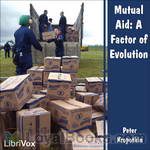 Mutual Aid: A Factor of Evolution
Mutual Aid: A Factor of Evolution
Mutual Aid: A Factor of Evolution is a book by Peter Kropotkin on the subject of mutual aid, written while he was living in exile in England. It was first published by William Heinemann in London in October 1902. The individual chapters had originally been published in 1890-96 as a series of essays in the British monthly literary magazine, Nineteenth Century. Written partly in response to Social Darwinism and in particular to Thomas H. Huxley’s Nineteenth Century essay, The Struggle for Existence, Kropotkin’s book drew on his experiences in scientific expeditions in Siberia to illustrate the phenomenon of cooperation... | |
 The Conquest of bread
The Conquest of bread
In this work, Kropotkin points out what he considers to be the fallacies of the economic systems of feudalism and capitalism, and how he believes they create poverty and scarcity while promoting privilege. He goes on to propose a more decentralised economic system based on mutual aid and voluntary cooperation, asserting that the tendencies for this kind of organisation already exist, both in evolution and in human society. | |
By: Philip K. Dick (1928-1982) | |
|---|---|
 The Crystal Crypt & Beyond the Door
The Crystal Crypt & Beyond the Door
Two early science fiction stories by the wonderful craftsman, Philip K. Dick. In the Crystal Crypt, taken from the 1954 Planet Stories, the war between Mars and Terra is about to erupt and earth has only merchants and salesmen to fight; can they carry out their mission? Beyond the Door is a story that asks and answers the question: what lives beyond the door? And is it dangerous? | |
 The Defenders
The Defenders
The terrible destruction of total nuclear war between the Western and Eastern Blocks has succeeded in sterilizing the surface of the earth. No living creature can now exist there and all humans on both sides, have fled to the hives built miles below the surface where they constantly work to produce the war materials necessary to carry on the battle. For 8 years now, the actual fighting between these super powers has been conducted by robots known as Ledeys since only they can sustain the terrible levels of radiation caused by the constant bombardment... | |
 Beyond Lies the Wub & The Skull
Beyond Lies the Wub & The Skull
Two stories in the inimitable Philip Dick style. What is a Wub? A 400 pound slovenly, fat, ungainly, drooling animal that looks like a cross between a walrus and an enormous hog? Well, yes that is pretty much what he looks like and for 50 cents, a good bargain no matter how he tastes. The hungry spaceship crew expect to find out. Of course the Wub may not entirely agree but it doesn't have much to say about it. The second story, The Skull, is a skilful mesh of time travel, unscrupulous governments, prisoners, and religion. With an assassin thrown in for good measure. Enjoy! | |
By: Plague Ship (1912-2005) | |
|---|---|
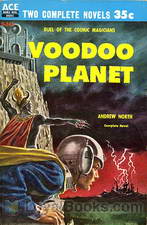 Voodoo Planet
Voodoo Planet
The sequel to Plague Ship, Voodoo Planet finds the Solar Queen banned from trade and starting her supposed quiet two-year stint as an interstellar mail carrier. But instead her crew accepts a visit to the safari planet of Khatka, where they find themselves caught in a battle between the forces of reason and the powers of Khatka’s mind-controlling wizard. | |
By: Plato (424-348 BC) | |
|---|---|
 Laws
Laws
Νόμοι (Laws) is Plato's final dialogue written after his attempt to advise the tyrant Dionysius II of Syracuse. The dialogue takes place between: an Athenian Stranger (Socrates? A god in human form?); the quiet Lacedaemonian Megillus; and the Cretan Cleinias. The Stranger asks whether humans live to be more effective at waging war or if there is something more important a legislator should seek to achieve. During their pilgrimage Cleinias discloses his role in the establishment of a new colony... | |
By: Pliny the Elder (23-79) | |
|---|---|
 Boys' and Girls' Pliny Vol. 1
Boys' and Girls' Pliny Vol. 1
The Natural History of Pliny the Elder is one of the largest single works to have survived from the Roman Empire. The full work consists of 37 books, covering more than 20.000 topics ranging from astronomy and mathematics to botany and precious stones. The book became a model for later encyclopaedias and gives a fascinating overview of the state of scientific knowledge almost 2000 years ago. This version of the Natural History has been adapted for a younger audience. This first volume contains Book I and Book II out of a total of 9 books. | |
By: Poul Anderson (1926-2001) | |
|---|---|
 Security
Security
“Security”, tells the story of a compartmentalized government physicist ordered by secret police to complete experiments aimed at developing a new weapon. He is brought to a hidden space station and put in charge of the project but there are many questions. In a world of spies watching spies it’s sometimes hard to know what’s patriotic. -- Poul Anderson was a Golden Age Science Fiction and Fantasy author. “Security” first appeared in the magazine “Space Science Fiction” in February of 1953 | |
By: President's Commission on the Accident at Three Mile Is | |
|---|---|
 Report of the President's Commission on the Accident at Three Mile Island
Report of the President's Commission on the Accident at Three Mile Island
At 4:00 a.m. on March 28, 1979, a serious accident occurred at the Three Mile Island 2 nuclear power plant near Middletown, Pennsylvania. The accident was initiated by mechanical malfunctions in the plant and made much worse by a combination of human errors in responding to it. During the next 4 days, the extent and gravity of the accident was unclear to the managers of the plant, to federal and state officials, and to the general public. What is quite clear is that its impact, nationally and internationally, has raised serious concerns about the safety of nuclear power. This Commission was established in response to those concerns. | |
By: Presidential Commission for the Study of Bioethical Iss | |
|---|---|
 Safeguarding children: pediatric medical countermeasure research
Safeguarding children: pediatric medical countermeasure research
Safeguarding Children: Pediatric Medical Countermeasure Research is the response from the Presidential Commission for the Study of Bioethical Issues to a request from Health and Human Services Secretary Kathleen Sebelius. In January 2012 Secretary Sebelius asked the Bioethics Commission to study the question of anthrax vaccine trials with children after receiving a recommendation from another federal committee that such research be initiated, pending ethical review. In this report the Bioethics Commission concluded that the federal government would have to take multiple steps before anthrax vaccine trials with children could be ethically considered... | |
By: Presidential Commission on the Space Shuttle Challenger | |
|---|---|
 Report to the President by the Presidential Commission on the Space Shuttle Challenger Accident
Report to the President by the Presidential Commission on the Space Shuttle Challenger Accident
Since being sworn in on February 6, 1986, the Commission has been able to conduct a comprehensive investigation of the Challenger accident. This report documents our findings and makes recommendations for your consideration. Our objective has been not only to prevent any recurrence of the failure related to this accident, but to the extent possible to reduce other risks in future flights. Each member of the Commission shared the pain and anguish the nation felt at the loss of the seven brave Americans in the Challenger accident on January 28, 1986... | |
By: R. Cadwallader Smith | |
|---|---|
 Within the Deep
Within the Deep
Presented in the form of lessons, R. Cadwallader Smith vividly portrays life in the ocean. Learn about the common and not so common that swim about in the deep, how they hunt for food and hide from enemies, visit a nursery and find out about the babies that live there, or take a stroll in an underwater garden. | |
By: Rai Bahadur A. Mitra | |
|---|---|
 Bubonic Plague
Bubonic Plague
Dr. Rai Bahadur A. Mitra who was the Chief Medical Officer in Kashmir presents a short treatise on the bubonic plague. The book ranges from a short history of the bubonic plague, including an account of the great 1665 plague in London, through description of the disease, treatment and prevention. - Summary by Larry Wilson | |
By: Randall Garrett (1927-1987) | |
|---|---|
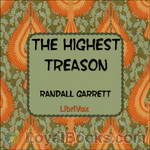 The Highest Treason
The Highest Treason
Set in a future in which humanity’s dream of total equality is fully realized and poverty in terms of material wealth has been eliminated, humanity has straight-jacketed itself into the only social system which could make this possible. Class differentiation is entirely horizontal rather than vertical and no matter what one’s chosen field, all advancement is based solely on seniority rather than ability. What is an intelligent and ambitious man to do when enslaved by a culture that forbids him from utilizing his God-given talents? If he’s a military officer in time of war, he might just decide to switch sides... | |
 A Spaceship Named McGuire
A Spaceship Named McGuire
Can a spaceship go crazy? Well, yes it can if it has a brain. And the new MG (magnetogravitic drive) experimental robot space ship does indeed have a 'brain'. Completely bewildered as to why the first six models of their supposedly perfect new ship model, the MG-YR, nicknamed the McGuire, have gone totally bonkers after activation and before they could ever be used, the company has called in the services of Daniel Oak. They suspect sabotage of course. Daniel Oak is the hard boiled private investigator with nerves of steel and a mind of the same substance... | |
 Unwise Child
Unwise Child
When a super-robot named Snookums discovers how to build his own superbombs, it becomes obvious that Earth is by no means the safest place for him to be. And so Dr. Fitzhugh, his designer, and Leda Crannon, a child psychologist acting as Snookums’ nursemaid, agree to set up Operation Brainchild, a plan to transport the robot to a far distant planet. But the space ship becomes the scene of some frightening events--the medical officer is murdered, and Snookums appears to be the culprit… | |
 That Sweet Little Old Lady
That Sweet Little Old Lady
Randall Garrett had this story first published in Astounding Science Fiction September and October of 1959. His twisted sense of humor and gift for the bizarre situation with believable characters shines here. In the not too distant future, Ken Malone, young but promising FBI agent , is given the most important and difficult assignment of his career: find a spy who is stealing information from the Ultra Top Absolute Secret project to develop a non-rocket space ship at Yucca Flats Labs in Nevada. But this is not a normal spy, this spy laughs at the FBI and all attempts to find him or her because they use an unknown new method to steal the information directly from the minds of the scientists. | |
 Anything You Can Do!
Anything You Can Do!
An alien crash lands on Earth, and for ten years terrorizes the planet, hiding, periodically killing and eating people and stealing materials for some unknown purpose. The only hope is Bart Stanton, a medically-engineered superman, designed for the sole purpose of confronting the “Nipe”. | |
By: Ray Cummings (1887-1957) | |
|---|---|
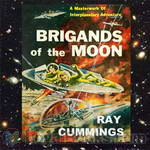 Brigands of the Moon
Brigands of the Moon
Gregg Haljan was aware that there was a certain danger in having the giant spaceship Planetara stop off at the moon to pick up Grantline’s special cargo of moon ore. For that rare metal — invaluable in keeping Earth’s technology running — was the target of many greedy eyes. But nevertheless he hadn’t figured on the special twist the clever Martian brigands would use. So when he found both the ship and himself suddenly in their hands, he knew that there was only one way in which he could hope to save that cargo and his own secret — that would be by turning space-pirate himself and paying the Brigands of the Moon back in their own interplanetary coin. (From the Gutenberg e-text) | |
 The Girl in the Golden Atom
The Girl in the Golden Atom
While examining a golden ring under a microscope, a chemist discovers a sub-atomic world. During his examination of this world he sees a beautiful young girl. After developing chemicals that will allow him to either shrink or grow larger in size, he and three friends journey to this small world. | |
 The World Beyond
The World Beyond
Lee Anthony finds himself and two of his friends kidnapped and taken on a strange voyage. | |
 Fire People
Fire People
In effect Professor Newland declared that the curious astronomical phenomena of the previous November--the new "stars" observed, the two meteors that had fallen with their red and green light-fire--were all evidence of the existence of intelligent life on the planet Mercury. (An excerpt from chapter 1. ) | |
 Wandl the Invader
Wandl the Invader
There were nine major planets in the Solar System and it was within their boundaries that man first set up interplanetary commerce and began trading with the ancient Martian civilization. And then they discovered a tenth planet--a maverick! This tenth world, if it had an orbit, had a strange one, for it was heading inwards from interstellar space, heading close to the Earth-Mars spaceways, upsetting astronautic calculations and raising turmoil on the two inhabited worlds. But even so none suspected then just how much trouble this new world would make... | |
 Tarrano the Conqueror
Tarrano the Conqueror
In "Tarrano the Conqueror" is presented a tale of the year 2430 A.D.--a time somewhat farther beyond our present-day era than we are beyond Columbus' discovery of America. My desire has been to create for you the impression that you have suddenly been plunged forward into that time--to give you the feeling Columbus might have had could he have read a novel of our present-day life. To this end I have conceived myself a writer of that future time, addressing his contemporary public. You are to imagine... | |
By: Ray Vaughn Pierce | |
|---|---|
 The People's Common Sense Medical Adviser
The People's Common Sense Medical Adviser
The People's Common Sense Medical Adviser In Plain English, Or, Medicine Simplified. By R.V. Pierce, M.D. INTRODUCTORY WORDS. Health and disease are physical conditions upon which pleasure and pain, success and failure, depend. Every individual gain increases public gain. Upon the health of its people is based the prosperity of a nation; by it every value is increased, every joy enhanced. Life is incomplete without the enjoyment of healthy organs and faculties, for these give rise to the delightful sensations of existence... | |
By: Raymond Z. Gallun (1911-1994) | |
|---|---|
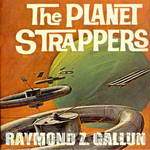 The Planet Strappers
The Planet Strappers
The Planet Strappers started out as The Bunch, a group of student-astronauts in the back room of a store in Jarviston, Minnesota. They wanted off Earth, and they begged, borrowed and built what they needed to make it. They got what they wanted--a start on the road to the stars--but no one brought up on Earth could have imagined what was waiting for them Out There! | |
By: Renato Baserga | |
|---|---|
 Radioisotopes and Life Processes
Radioisotopes and Life Processes
This is a book in the "Understanding the Atom Series".from the Division of Technical Information, U. S. Atomic Energy Commission. The authors explore general cell theory, radioisotopes as "biologic detectives," the basics of DNA and RNA in cell structure, protein synthesis and the role of radioisotopes in research. - Summary by Larry Wilson | |
By: René Descartes (1596-1650) | |
|---|---|
 Discourse on the Method of Rightly Conducting One's Reason and of Seeking Truth in the Sciences
Discourse on the Method of Rightly Conducting One's Reason and of Seeking Truth in the Sciences
The Discourse on Method is best known as the source of the famous quotation “cogito ergo sum”, “I think, therefore I am.” …. It is a method which gives a solid platform from which all modern natural sciences could evolve. With this work, the idea of skepticism was revived from the ancients such as Sextus Empiricus and modified to account for a truth that Descartes found to be incontrovertible. Descartes started his line of reasoning by doubting everything, so as to assess the world from a fresh perspective, clear of any preconceived notions. | |
By: Review of U.S. Human Space Flight Plans Committee | |
|---|---|
 Seeking a Human Spaceflight Program Worthy of a Great Nation
Seeking a Human Spaceflight Program Worthy of a Great Nation
"The [Review of U.S. Human Space Flight Plans Committee] shall conduct an independent review of ongoing U.S. human space flight plans and programs, as well as alternatives, to ensure the nation is pursuing the best trajectory for the future of human space flight – one that is safe, innovative, affordable, and sustainable. The Committee should aim to identify and characterize a range of options that spans the reasonable possibilities for continuation of U.S. human space flight activities beyond retirement of the Space Shuttle... | |
By: Richard A. Proctor (1837-1888) | |
|---|---|
 Light Science for Leisure Hours
Light Science for Leisure Hours
In preparing these Essays, my chief object has been to present scientific truths in a light and readable form—clearly and simply, but with an exact adherence to the facts as I see them. I have followed—here and always—the rule of trying to explain my meaning precisely as I should wish others to explain, to myself, matters with which I was unfamiliar. Hence I have avoided that excessive simplicity which some seem to consider absolutely essential in scientific essays intended for general perusal, but which is often even more perplexing than a too technical style... | |
By: Richard Alfred Davenport (1777-1852) | |
|---|---|
 Sketches of Imposture, Deception, and Credulity
Sketches of Imposture, Deception, and Credulity
This book contains many brief tales from history of commoners pretending to be kings and kings pretending to be commoners. Learn the fate of a Dutch merchant who wanted a kiss from the disguised Peter the Great's wife. Learn how a farmer's daughter born in 1750 in England gained attention and fame in many lands, and why her death was disbelieved. Learn about early vampires and ghosts. Find out the answers to these and other stories within this book. | |
By: Richard Jefferies (1848-1887) | |
|---|---|
 After London, or Wild England
After London, or Wild England
First published in 1885, After London, or Wild England is considered to be one of the earliest instances of post-apocalyptic fiction, describing the effects of an unspecified catastrophe that dramatically changes the face of England and its population. Divided into two parts, the first depicts the fall of civilization, as society reverts to its more primitive roots, while the second part is set years after the apocalyptic event and examines the evident changes in both natural scenery and social structure... | |
By: Richard Mead (1673-1754) | |
|---|---|
 Short Discourse Concerning Pestilential Contagion, and the Methods to Be Used to Prevent It
Short Discourse Concerning Pestilential Contagion, and the Methods to Be Used to Prevent It
This is a work written about the plague in France and how to prevent its spread. It is considered an important historical work for the understanding of transmittable diseases. - Summary by afutterer | |
By: Richard Sabia | |
|---|---|
 I Was a Teen-Age Secret Weapon
I Was a Teen-Age Secret Weapon
Poor Dolliver Wims is a terribly misunderstood teen age boy from the backwoods. Is he mean or evil? Quite the opposite: He does nothing wrong, hurts no one and wants only to be liked and to help, yet he seems to be blamed for every accident that ever happens to anyone in the University research facility where he 'works' as a porter. Why does disaster seem to swirl around him like a tornado whips around it's eye. He never is hurt in the slightest way while others slash themselves with previously innocent knives, are smashed by falling bookcases that had no cause to fall, and are shot by guns that are safely tucked away... | |
By: Richard Swann Lull (1867-1957) | |
|---|---|
 Organic Evolution
Organic Evolution
Organic Evolution is a college textbook that describes the mechanism of biological evolution by natural selection. It then explores the evidences for evolution in various animals, including insects, reptiles, birds and humans, mainly from the science of paleontology. | |
By: Richard W. Church (1815-1890) | |
|---|---|
 Bacon
Bacon
This investigation of Bacon the scholar and man of letters begins with a look at the early days ang progresses to his relationships with Queen Elizabeth and James I. It includes accounts of his positions as solicitor general, attorney-general, and chancellor. The book concludes with Bacon's failure, his overall philosophy, and summaries of his writings. | |
By: Roald Amundsen (1872-1928) | |
|---|---|
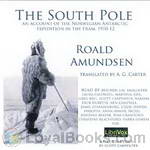 The South Pole; an account of the Norwegian Antarctic expedition in the Fram, 1910-12
The South Pole; an account of the Norwegian Antarctic expedition in the Fram, 1910-12
In contrast to Scott’s South Pole expedition, Amundsen’s expedition benefited from good equipment, appropriate clothing, and a fundamentally different primary task (Amundsen did no surveying on his route south and is known to have taken only two photographs) Amundsen had a better understanding of dogs and their handling, and he used of skis more effectively. He pioneered an entirely new route to the Pole and they returned. In Amundsen’s own words: “Victory awaits him who has everything in order — luck, people call it... | |
By: Robert J. Braidwood (1907-2003) | |
|---|---|
 Prehistoric Men
Prehistoric Men
This little book, first published in 1948, is part of the Chicago Natural History Popular History series that explains difficult subjects in ways and terms we all can understand. It was published at a time in Anthropology when exciting things like carbon dating were first being used and refined. "Prehistory means the time before written history began. Actually, more than 99 per cent of man’s story is prehistory. Man is at least half a million years old, but he did not begin to write history until about 5,000 years ago... | |
By: Robert Armitage Sterndale | |
|---|---|
 Natural History of the Mammalia of India and Ceylon
Natural History of the Mammalia of India and Ceylon
NATURAL HISTORY OF THE MAMMALIA OF INDIA AND CEYLON.By Robert A. Sterndale, F.R.G.S., F.Z.S., &C., PREFACE. This work is designed to meet an existing want, viz.: a popular manual of Indian Mammalia. At present the only work of the kind is one which treats exclusively of the Peninsula of India, and which consequently omits the more interesting types found in Assam, Burmah, and Ceylon, as well as the countries bordering the British Indian Empire on the North. The geographical limits of the present work have been extended to all territories likely to be reached by the sportsman from India, thus greatly enlarging the field of its usefulness... | |
By: Robert Bloch | |
|---|---|
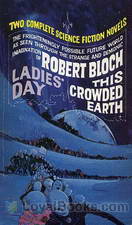 This Crowded Earth
This Crowded Earth
Robert Bloch was a prolific writer in many genres. As a young man he was encouraged by his mentor H. P. Lovecraft, and was a close friend of Stanley G. Weinbaum. Besides hundreds of short stories and novels he wrote a number of television and film scripts including several for the original Star Trek. In 1959 Bloch wrote the novel Psycho which Alfred Hitchcock adapted to film a year later. He received the Hugo Award, the World Fantasy Award, the Bram Stoker Award, and he is a past president of the Mystery Writers of America. Published in Amazing Stories in 1958, This Crowded Earth is a thriller set on an overpopulated Earth of the future. | |
By: Robert Burton (1577-1640) | |
|---|---|
 Anatomy of Melancholy Volume 3
Anatomy of Melancholy Volume 3
The Anatomy of Melancholy is a book by Robert Burton, first published in 1621. On its surface, the book is a medical textbook in which Burton applies his large and varied learning in the scholastic manner to the subject of melancholia (which includes what is now termed clinical depression). Though presented as a medical text, The Anatomy of Melancholy is as much a sui generis work of literature as it is a scientific or philosophical text, and Burton addresses far more than his stated subject. In... | |
By: Robert Falcon Scott (1868-1912) | |
|---|---|
 The Journals of Robert Falcon Scott
The Journals of Robert Falcon Scott
Capt. Robert F. Scott's bid to be the leader of the first expedition to reach the South Pole is one of the most famous journeys of all time. What started as a scientific expedition turned out to be an unwilling race against a team lead by R. Admunsen to reach the Pole. The Norwegian flag already stood at the end of the trail when Scott's party reached their target. All the five men of the Scott expedition who took part in the last march to the Pole perished on their way back to safety. Robert F. Scott kept a journal throughout the journey, all the way to the tragic end, documenting all aspects of the expedition... | |
By: Robert Goadby (1721-1778) | |
|---|---|
 Surprising Adventures of Bampfylde Moore Carew, King of the Beggars
Surprising Adventures of Bampfylde Moore Carew, King of the Beggars
The Surprising Adventures of Bampfylde Moore Carew recounts the wide-ranging exploits of a real-life rogue – a wily professional mendicant who roams 18th-century England extracting charity from merchants, clergyman, and members of the landed gentry alike, employing in his craft an ingenious variety of deceptions and disguises put on for the purpose. Often he impersonates a shipwreck-surviving seaman and uses his wide knowledge of foreign parts and personages to achieve plausibility. Or he might appear on a doorstep as a destitute woman in widow's weeds, toting borrowed babes to enhance the effect... | |
By: Robert Hugh Benson (1871-1914) | |
|---|---|
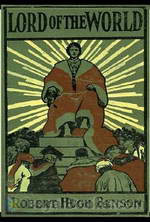 Lord of the World
Lord of the World
“Mr. Benson sees the world, four or five generations hence, free at last from all minor quarrels, and ranged against itself in two camps, Humanitarianism for those who believe in no divinity but that of man, Catholicism for those who believe in no divinity but that of God.” This apocalyptic novel from the early 1900's is sometimes deemed one of the first modern dystopias. | |
By: Robert Millikan (1868-1953) | |
|---|---|
 On the Elementary Electrical Charge
On the Elementary Electrical Charge
The experiments herewith reported were undertaken with the view of introducing certain improvements into the oil-drop method of determining e and N and thus obtaining a higher accuracy than had before been possible in the evaluation of these most fundamental constants. From the Physical Review, Vol. II, No. 2 | |
By: Robert N Bader | |
|---|---|
 Amphibians and Reptiles in Captivity
Amphibians and Reptiles in Captivity
In recent years the number of people interested in keeping amphibians and reptiles in captivity has grown rapidly. All too often, these same people have little knowledge of the proper care needed for their captives, nor do they know where to turn in order to learn the needs of their animals. It is the intent of the authors of this special issue to offer the proper information needed to successfully keep amphibians and reptiles in captivity. We are by no means THE experts on the subject, nor do we claim to cover all the facts. However, we do hope that enough information is furnished to answer most of the common questions asked by people. - Summary by Tom R. Johnson | |
By: Robert Sheckley (1928-2005) | |
|---|---|
 The Status Civilization
The Status Civilization
Will Barrent awakes without memories just before being deposited on Omega, a planet for criminals where the average life expectancy is 3 years. He’s listed as a murderer and released into the illicit society as a “peon” the lowest class imaginable. A mysterious girl gives him a weapon that starts him on his path to status, a path that requires constant brutality. But it must be borne if our hero is to discover the reason for his imprisonment; A reason that pits him against himself, and involves the sardonically similar but devoutly different creeds of Omega and Earth... | |
 Watchbird
Watchbird
3 Robert Sheckley short stories that demonstrate the breathof his fantastic imagination. In Watchbird, the question "can machines solve human problems?" is answered with a resounding YES! But there may be a few unforeseen glitches. Just a few. Warrior Race drops us into an alien race of warriors who fight in a way you will never be able to imagine until you listen. And Beside Still Waters is a gentle story that shows us a man who really wants to get away from it all ... sitting on a rock in the asteroid belt with only a robot for a friend. No girls allowed! A poignant and unsettling story to say the least. | |
By: Robert Silverberg (1935-) | |
|---|---|
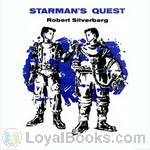 Starman's Quest
Starman's Quest
Travelling at speeds close to that of light, spacemen lived at an accelerated pace. When one of the twin boys left the starship, he grew older while his twin in space barely aged. So the starship twin left the ship to find what happened to his brother who was aging away on earth. | |
 Happy Unfortunate
Happy Unfortunate
Here are two early stories by the well known SF Author Robert Silverberg. The Happy Unfortunate was published first in Amazing Stories in 1957 and explores the angst caused when the human race reaches into space but at the cost of needing to breed a new species; specialized 'spacers' who can withstand the tremendous rigors of acceleration. The Hunted Heroes was published in Amazing stories a year earlier, in 1956. It is a futuristic story that holds great hope for the resilience of the human race after the war destroys most of the world. | |
By: Robert Silverberg and Randall Garrett (1935-) | |
|---|---|
 The Judas Valley
The Judas Valley
Why did everybody step off the ship in this strange valley and promptly drop dead? How could a well-equipped corps of tough spacemen become a field of rotting skeletons in this quiet world of peace and contentment? It was a mystery Peter and Sherri had to solve. If they could live long enough! [from the Judas Valley]Originally published in Amazing Stories, October 1956 | |
By: Robert Stawell Ball (1840-1913) | |
|---|---|
 Great Astronomers
Great Astronomers
Of all the natural sciences there is not one which offers such sublime objects to the attention of the inquirer as does the science of astronomy. From the earliest ages the study of the stars has exercised the same fascination as it possesses at the present day. Among the most primitive peoples, the movements of the sun, the moon, and the stars commanded attention from their supposed influence on human affairs. From the days of Hipparchus down to the present hour the science of astronomy has steadily grown... | |
By: Robert Sterling Yard (1861-1945) | |
|---|---|
 The Book of the National Parks
The Book of the National Parks
Robert Sterling Yard (February 1, 1861 – May 17, 1945) was an American writer, journalist, and wilderness activist. Born in Haverstraw, New York, Yard graduated from Princeton University and spent the first twenty years of his career in the editing and publishing business. In 1915, he was recruited by his friend Stephen Mather to help publicize the need for an independent national park agency. Their numerous publications were part of a movement that resulted in legislative support for a National Park Service (NPS) in 1916... | |
By: Robert Williams Wood (1868-1955) | |
|---|---|
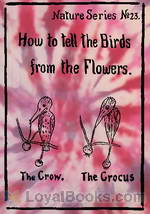 How to Tell the Birds from the Flowers
How to Tell the Birds from the Flowers
How do you tell apart a parrot from a carrot? A plover from a clover? A bay from a jay? Although there are several ways of differentiating, R. W. Wood’s use of pun and rhyme is one of the most entertaining! | |
By: Roger North (1653-1734) | |
|---|---|
 History of Esculent Fish
History of Esculent Fish
Roger North, son of Dudley North, 4th Baron North, was a successful member of the bar and later member of parliament. But he had wide ranging interests from architecture to music. He has an avid collector of books and is best known as the biographer of the North family. Here we sample his interest in raising fish. He presents fifteen short sketches of esculent fish, and a longer essay as "A Discourse of Fish and Fish Ponds." - Summary by Larry Wilson | |
By: Rupert H. Wheldon (1883-) | |
|---|---|
 No Animal Food and Nutrition and Diet with Vegetable Recipes
No Animal Food and Nutrition and Diet with Vegetable Recipes
Though little is known about its author, this is considered the first vegan cookbook ever written. At the time of its composition, the Vegetarian Society and other advocates of vegetarian diets were engaged in a debate about the inclusion of dairy and eggs in one's regime. This text declares, from the title to the footnotes, that the best diet is free from all animal products. The arguments span historical, physical, ethical, aesthetic, and economic considerations and conclude with practical advice that stands the test of time. An essential text for those interested in vegetarianism and animal rights. | |
By: Russel Doubleday (1872-1949) | |
|---|---|
 Stories of Inventors
Stories of Inventors
Doubleday chronicles the history of everyday inventions that form the foundation of technology now common through the world. While some of the inventions are no longer used, each example shows how inventors contributed to technology through perseverance, inspiration and clever observations. In each chapter, he gives a clear, understandable background of the technology.Many of the now outdated inventions may have inspired later inventions by meeting emerging demands. For example, Edison's filament bulb is now being phased out by more efficient CFL's, but Edison's contribution to indoor lighting likewise removed the need for inefficient gas-burning lamps... | |
By: S. Louise Patteson (1853-1922) | |
|---|---|
 How To Have Bird Neighbors
How To Have Bird Neighbors
The author provides the listener with anecdotes from her life of her experiences with birds. She describes their habits and antics, their food favorites, their preferred nesting practices, and what can be done to encourage birds to become "neighbors". She also provides instructions on making a birdhouse. | |
By: Samuel Phillips Day | |
|---|---|
 Tea: Its Mystery and History
Tea: Its Mystery and History
Samuel Phillips Day traces the history of tea from Asia to England, exploring some of the romance of this treasured drink and its place in British culture. - Summary by Larry Wilson | |
By: Selina Gaye (1840-1914) | |
|---|---|
 The World's Lumber Room
The World's Lumber Room
If this book were written today, it would be called "The Story of the World's Rubbish".That may not sound a promising subject for a book, but we are taken on a journey all over the world (and beyond) to explain the many varieties of dust and refuse - animal, vegetable and mineral - how it is made both by man and by nature, what happens to it, and why we need it. We find that recycling is nothing new: man has been doing it for centuries, and nature has been doing it for billions of years. As every schoolboy knows, 'matter is neither created nor destroyed', so it stands to reason that every particle of it must be somewhere... | |
By: Sextus Julius Frontinus (40-103) | |
|---|---|
 Stratagems and The Aqueducts of Rome
Stratagems and The Aqueducts of Rome
Frontinus' Stratagems is a collection of examples of military stratagems from Greek and Roman history, which the author comments based on his own experience as a general in Germania. Many of the stories he tells can also be found in other Roman authors like Valerius Maximus and Livy. His most famous work however is De aquaeductu, The Aqueducts of Rome, an official report to the emperor on the state of the aqueducts of Rome, in two books. It presents a history and description of all the nine aqueducts that provided the water-supply of Rome in the first century, as well as information about the laws relating to its use and maintenance, and the quality of water delivered by each. | |
By: Sigmund Freud (1856-1939) | |
|---|---|
 Psychopathology of Everyday Life
Psychopathology of Everyday Life
Professor Freud developed his system of psychoanalysis while studying the so-called borderline cases of mental diseases, such as hysteria and compulsion neurosis. By discarding the old methods of treatment and strictly applying himself to a study of the patient's life he discovered that the hitherto puzzling symptoms had a definite meaning, and that there was nothing arbitrary in any morbid manifestation. Psychoanalysis always showed that they referred to some definite problem or conflict of the person concerned... | |
By: Sir Arthur Conan Doyle (1859-1930) | |
|---|---|
 Danger! and Other Stories
Danger! and Other Stories
This is a volume of short stories by the famous Arthur Conan Doyle. | |
By: Sir Charles Bright (1863-1937) | |
|---|---|
 Story of the Atlantic Cable
Story of the Atlantic Cable
The electric telegraph, together with the railway-train and the steamship, constituted the three most conspicuous features of late 19th century civilization. Indeed, it may be truly said that the harnessing electricity to the service of man for human communication has effected a change in political, commercial, and social relations, even more complete than that wrought by steam locomotion. This is the story of how the electric telegraph cable was laid across the floor of the Atlantic from Newfoundland to Ireland. - Summary by modified from the introduction | |
By: Sir Francis Galton (1822-1911) | |
|---|---|
 Hereditary Genius
Hereditary Genius
A biographical summary of the pre-eminent men of Britain grouped by profession. The extensive survey draws from information including college graduation, reputation during career, fellowships, and even known relatives. Includes discussions on findings and observations as well as referenced appendices. - Summary by Leon Harvey | |
 Inquiries into Human Faculty and its Development
Inquiries into Human Faculty and its Development
Francis Galton, credited with the discovery of identification by fingerprinting, also took a long term interest in the study of biometrics. In this book, many different faculties, both observable and measurable are discussed in length and methods of collecting data suggested. In addition, casual observations from personal memoirs, and drawing similar cases from other reputable sources are also compared. A wide variety of topics are mentioned, including differences in appearance within family members, to subtle habits and emotional responses comparing humans and animals are mentioned in a series of chapter length essays. - Summary by Leon Harvey | |
By: Sir Thomas Edward Thorpe (1845-1925) | |
|---|---|
 History of Chemistry, Volume II. From 1850-1910
History of Chemistry, Volume II. From 1850-1910
A history of the advances in chemistry, in the fields of inorganic, organic and physical chemistry from the mid-nineteenth century through the early 1900s. Included are brief biographical sketches of some early pioneers in the field such as Mendeleev, Liebeg, Williamson, Dewar and others. Chapters covering the discovery of new elements, the developing understanding of structure, properties and reactivity, the beginnings of practical organic synthesis and the early work on stereoisomerism show how the way was paved for the discoveries that followed in the 20th century... | |
By: Sir William Henry Bragg (1862-1942) | |
|---|---|
 World of Sound
World of Sound
The World of Sound consists of six lectures delivered before a juvenile audience at the Royal Institution, Christmas 1919. The Royal Institution Christmas Lectures are a series of lectures on a single topic, which have been held at the Royal Institution in London each year since 1825, except several years during the Second World War. The lectures present scientific subjects to a general audience, including young people, in an informative and entertaining manner. Michael Faraday initiated the first Christmas Lecture series in 1825, at a time when organised education for young people was scarce... | |
By: Stanley Grauman Weinbaum (1902-1935) | |
|---|---|
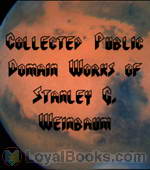 Works of Stanley G. Weinbaum - A Martian Odyssey
Works of Stanley G. Weinbaum - A Martian Odyssey
Stanley G. Weinbaum is best known for his short story “A Martian Odyssey” which has been influencing Science Fiction since it was first published in 1934. Weinbaum is considered the first writer to contrive an alien who thought as well as a human, but not like a human. A Martian Odyssey and its sequel are presented here as well as other Weinbaum gems including 3 stories featuring the egomaniacal physicist Haskel van Manderpootz and his former student, playboy Dixon Wells. | |
By: Stephen Graham (1884-1975) | |
|---|---|
 In Quest of El Dorado
In Quest of El Dorado
Lively descriptions of the people, places, and customs that the author encounters as he attempts to retrace the steps of the early Spanish conquistadores in the Americas: Columbus, Cortez, Pizarro, Balboa, Coronado. | |
By: Steve Solomon | |
|---|---|
 Gardening Without Irrigation: or without much, anyway
Gardening Without Irrigation: or without much, anyway
Gardening expert Steve Solomon has written extensively on gardening techniques for the home gardener. Water conservation is the focus of this work, along with more information on how to have the healthiest plants in your garden through “fertigation”, appropriate plant rotation, and soil preparation. | |
 Organic Gardener's Composting
Organic Gardener's Composting
The art and science of composting is presented in a humorous and readable manner from the basic elements to the in-depth science. An entire chapter is devoted to composting with red worms (vermiculture), and detailed information is provided on building different types of composting units. The history of the organic gardening movement is included as well as an annotated bibliography of works on the subjects of composting and food gardening. | |
By: T. W. H. Crosland | |
|---|---|
 Wild Irishman
Wild Irishman
History and customs of the Irish and Ireland. A word of warning to the listener: The Wild Irishman contains the biased, uncomplimentary opinions of Englishman, Thomas Crosland. Remember this was written in the late 1800's and published in 1905. Crosland was hyper critical of Irishmen and women at a time when American cities often posted signs, "No Irish Need Apply." If you are Irish, as am I, try to not be overly offended or simply walk away. - Summary by John Brandon | |
By: Terry Carr (1937-1987) | |
|---|---|
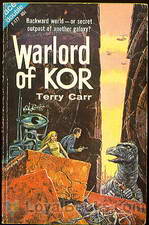 Warlord of Kor
Warlord of Kor
Warlord of Kor was originally published in 1963 as half of an Ace Double, selected by legendary editor Donald A. Wollheim. It is an interplanetary adventure, as humans probe the mysteries of the planet Hirlaj and the few remaining aliens who live there. Terry Carr never really shone as a writer, though he did write some remarkably thoughtful stories. However, his talents as an editor and anthologist were important and undeniable, and he brought many good writers and authors into science fiction and fantasy... | |
By: The Commission on Enhancing National Cybersecurity | |
|---|---|
 Report on Securing and Growing the Digital Economy
Report on Securing and Growing the Digital Economy
President Obama formed The President's Commission on Enhancing National Cybersecurity on April 13, 2016 to develop a plan for protecting cyberspace and America's economic reliance upon it. The commission's final report was released in December 2016. The report examined the state of cybersecurity today, looked ahead to the challenges in the future, and made recommendations to the incoming Trump administration and future administrations on ways the military, government, and private sector should enhance cybersecurity. - Summary by TriciaG | |
By: The President's Commission on Immigration and Naturalizatio | |
|---|---|
 Whom We Shall Welcome: Report of the President's Commission on Immigration and Naturalization
Whom We Shall Welcome: Report of the President's Commission on Immigration and Naturalization
In 1952, Congress passed the Immigration and Nationality Act of 1952, which had many provisions objectionable to many Americans. President Truman vetoed it, but it was passed in June 1952 over the President's veto. President Truman established the President's Commission on Immigration and Naturalization [in September 1952]. He directed the Commission "to study and evaluate the immigration and naturalization policies of the United States" and to make recommendations "for such legislative, administrative, or other action as in its opinion may be desirable in the interest of the economy, security, and responsibilities of this country... | |
By: Theodore Roosevelt | |
|---|---|
 Through the Brazilian Wilderness
Through the Brazilian Wilderness
Roosevelt’s popular book Through the Brazilian Wilderness describes his expedition into the Brazilian jungle in 1913 as a member of the Roosevelt-Rondon Scientific Expedition co-named after its leader, Brazilian explorer Cândido Rondon. The book describes all of the scientific discovery, scenic tropical vistas and exotic flora, fauna and wild life experienced on the expedition. One goal of the expedition was to find the headwaters of the Rio da Duvida, the River of Doubt, and trace it north to the Madeira and thence to the Amazon River... | |
By: Thomas G. Crippen (1841-1930) | |
|---|---|
 Christmas and Christmas Lore
Christmas and Christmas Lore
For above forty years I have been a diligent collector of history, tradition, legend, custom, or folklore, whether from familiar or unfamiliar sources, relating to the festival of the Holy Nativity. Moreover, I have gathered copiously from scarce pamphlets of the 17th and 18th centuries, from old chapbooks, newspaper paragraphs, and magazine articles old and new, and from contact with rustics in several counties. The fruits of my gathering are briefly summarized in the following pages, in the hope that they may conduce to that "joy and pious mirth" wherewith we ought, all of us, to commemorate the best and greatest Gift of God to man. - Summary by from the Preface | |
By: Thomas Gilbert Pearson (1873-1943) | |
|---|---|
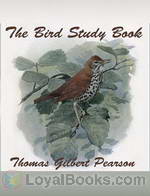 The Bird Study Book
The Bird Study Book
Do you enjoy birdwatching? Would you like to learn a little more about the early conservations efforts to protect wild birds? In the Preface to The Bird Study Book, Pearson tells us “This book was written for the consideration of that ever-increasing class of Americans who are interested in acquiring a greater familiarity with the habits and activities of wild birds. Attention is also given to the relation of birds to mankind and the effect of civilisation on the bird-life of the country. ” An avid ornithologist, T... | |
By: Thomas H. Burgoyne (1855-1894) | |
|---|---|
 The Light of Egypt, vol II
The Light of Egypt, vol II
"The Light of Egypt" will be found to be an Occult library in itself, a textbook of esoteric knowledge, setting forth the "wisdom Religion" of life, as taught by the Adepts of Hermetic Philosophy. It will richly repay all who are seeking the higher life to carefully study this book, as it contains in a nutshell the wisdom of the ages regarding man and his destiny, here and hereafter. The London and American first edition, also the French edition, Vol. I, met with lively criticism from Blavatsky Theosophists, because it annihilates that agreeable delusion of "Karma" and "Reincarnation" from the minds of all lovers of truth for truth's sake. | |
By: Thomas Henry Huxley (1825-1895) | |
|---|---|
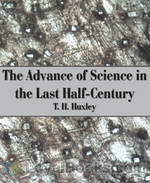 The Advance of Science in the Last Half-Century
The Advance of Science in the Last Half-Century
Thomas H. Huxley, an English biologist and essayist, was an advocate of the theory of evolution and a self-proclaimed agnostic. A talented writer, his essays helped to popularize science in the 19th century, and he is credited with the quote, “Try to learn something about everything and everything about something.” In The Advance of Science in the Last Half Century, he presents a summary of the major developments in Physics, Chemistry and Biology during the period 1839-1889 and their impact on society, within the historical context of philosophical thought and scientific inquiry going back to Aristotle... | |
By: Thomas Hobbes (1588-1679) | |
|---|---|
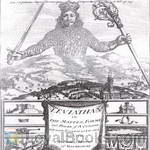 Leviathan, or The Matter, Forme and Power of a Common Wealth Ecclesiasticall and Civil
Leviathan, or The Matter, Forme and Power of a Common Wealth Ecclesiasticall and Civil
Books 1 and 2. Leviathan, or The Matter, Forme and Power of a Common Wealth Ecclesiasticall and Civil is a book written in 1651 by Thomas Hobbes. The book concerns the structure of society (as represented figuratively by the frontispiece, showing the state giant made up of individuals). In the book, Hobbes argues for a social contract and rule by a sovereign. Influenced by the English Civil War, Hobbes wrote that chaos or civil war – situations identified with a state of nature and the famous motto bellum omnium contra omnes (”the war of all against all”) – could only be averted by strong central government... | |
By: Thomas R. Henry (1893-1968) | |
|---|---|
 Strangest Things in the World: A Book About Extraordinary Manifestations of Nature
Strangest Things in the World: A Book About Extraordinary Manifestations of Nature
"THE STRANGEST THINGS IN THE WORLD - A Book About Extraordinary Manifestations of Nature" This title sums up the wonderful line up in this book. Short pieces about the strange and often bewildering things that occur in our world, from the insect that is born pregnant, to the fearsome poison arrow frog and about 170 others. If you like odd facts and weird plants and animals, this collection will delight you. So pick something interesting and enjoy reading it. The author is one of the world’s best-known and most respected science writers... | |
By: Thomas R. Malthus (1766-1834) | |
|---|---|
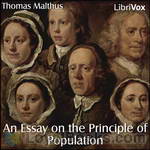 An Essay on the Principle of Population
An Essay on the Principle of Population
The power of population is indefinitely greater than the power in the earth to produce subsistence for man. Population, when unchecked, increases in a geometrical ratio. Subsistence increases only in an arithmetical ratio. A slight acquaintance with numbers will show the immensity of the first power in comparison with the second (Malthus). | |
By: Thomas Southwood Smith (1788-1831) | |
|---|---|
 Use Of The Dead To The Living
Use Of The Dead To The Living
In 1827 Thomas Southwood-Smith published The Use of the Dead to the Living, a pamphlet which argued that the current system of burial in the United Kingdom was a wasteful use of bodies that could otherwise be used for dissection by the medical profession. "If, by any appropriation of the dead, I can promote the happiness of the living, then it is my duty to conquer the reluctance I may feel to such a disposition of the dead, however well-founded or strong that reluctance may be". Southwood-Smith's lobbying helped lead to the 1832 Anatomy Act, the legislation which allowed the state to seize unclaimed corpses from workhouses and sell them to surgical schools... | |
By: Thomas Thomson (1773-1852) | |
|---|---|
 History of Chemistry
History of Chemistry
Origin and progress of chemistry, from its beginnings in alchemy into the early 19th century including history and characters of important contributors to the science. | |
By: Thomas W. Corbin | |
|---|---|
 Marvels of Scientific Invention
Marvels of Scientific Invention
This is a chronicle of the 19 most interesting inventions of the early 20th century. Some of the inventions are still in use and of considerable impact today, while others are examples of the strong belief in progress prevalent at the time would probably be frowned upon today. In this way, the author's account of how ice was made at the time will still be very interesting for readers today, but an account of how dynamite was going to be used in farming may be seen as humorous to the contemporary reader. The subjects are as varied as science herself is, and any reader and listener should find a subject matching his or her own taste. - Summary by Carolin | |
By: Thornton W. Burgess (1874-1965) | |
|---|---|
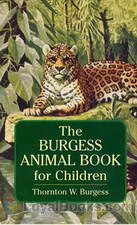 The Burgess Animal Book for Children
The Burgess Animal Book for Children
Peter Rabbit goes to school, with Mother Nature as his teacher. In this zoology book for children, Thornton W. Burgess describes the mammals of North America in the form of an entertaining story, including plenty of detail but omitting long scientific names. There is an emphasis on conservation. | |
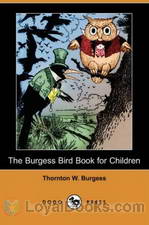 The Burgess Bird Book for Children
The Burgess Bird Book for Children
The Burgess Bird Book for Children is a zoology book written in the form of a story featuring Peter Rabbit. Peter learns from his friend Jenny Wren all about the birds of North America, and we meet many of them in the Old Orchard, the Green Meadow, and the Green Forest. | |
By: Tickner Edwardes (1865-1944) | |
|---|---|
 Neighbourhood – A Year’s Life in and About an English Village
Neighbourhood – A Year’s Life in and About an English Village
If you love the quiet of the country - the real quiet which is not silence at all, but the blending of a myriad scarce-perceptible sounds you will get it in Windlecombe, year in and year out. For how many ages a human settlement has existed in this wooded, sun-flooded cleft of the Downs, it is impossible to hazard a guess. Windlecombe is mentioned in Domesday, but the stones of the old church proclaim it as belonging to times more distant still. Neighbourhood, the daily interchange of thought and word and kindly deed, is a necessity for all healthy human life, and the natural medium of all true advancement... | |
By: Titus Lucretius Carus (94? BC - 49? BC) | |
|---|---|
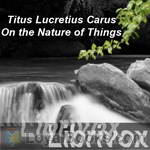 On the Nature of Things
On the Nature of Things
Written in the first century b.C., On the Nature of Things (in Latin, "De Rerum Natura") is a poem in six books that aims at explaining the Epicurean philosophy to the Roman audience. Among digressions about the importance of philosophy in men's life and praises of Epicurus, Lucretius created a solid treatise on the atomic theory, the falseness of religion and many kinds of natural phenomena. With no harm to his philosophical scope, the author composed a didactic poem of epic flavor, of which the imagery and style are highly praised. | |
By: Tom Godwin (1915-1980) | |
|---|---|
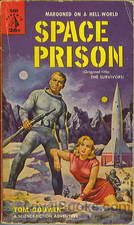 Space Prison
Space Prison
AFTER TWO CENTURIES….The sound came swiftly nearer, rising in pitch and swelling in volume. Then it broke through the clouds, tall and black and beautifully deadly — the Gern battle cruiser, come to seek them out and destroy them. Humbolt dropped inside the stockade, exulting. For two hundred years his people had been waiting for the chance to fight the mighty Gern Empire … with bows and arrows against blasters and bombs! | |